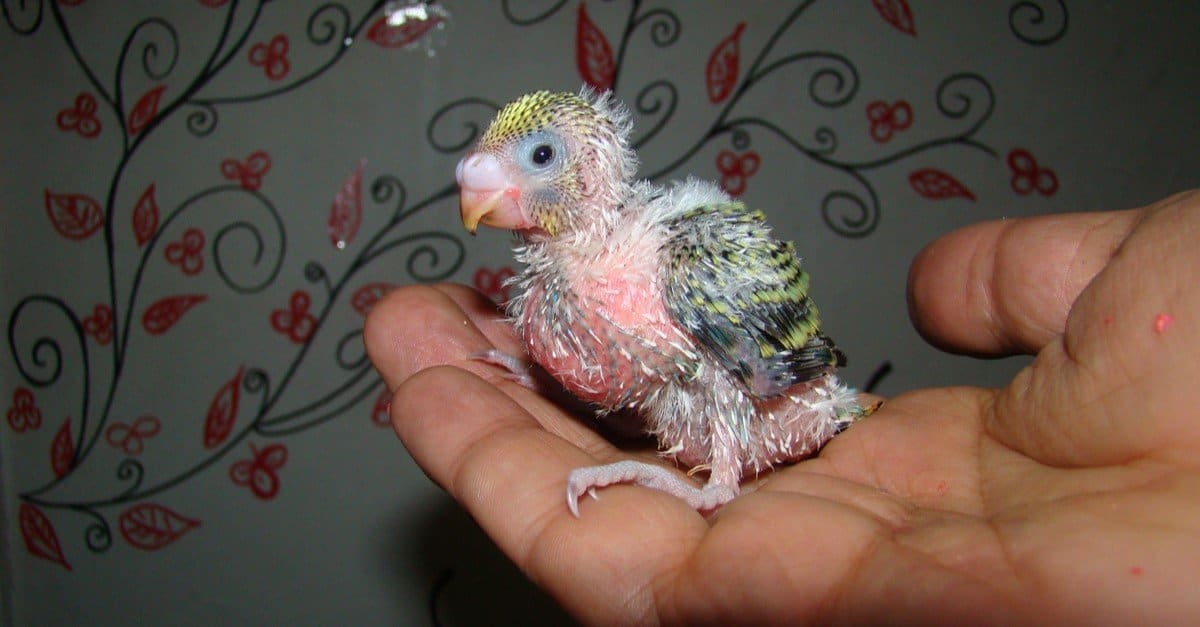Welcome to our in-depth exploration of parakeet mating and reproduction. In this article, we will unveil the fascinating reproductive process of these charming birds. We will provide insights into their courtship rituals, breeding behavior, egg-laying, and incubation period. Not to mention the joyous arrival of adorable parakeet hatchlings.
Summary of Parakeet Mating
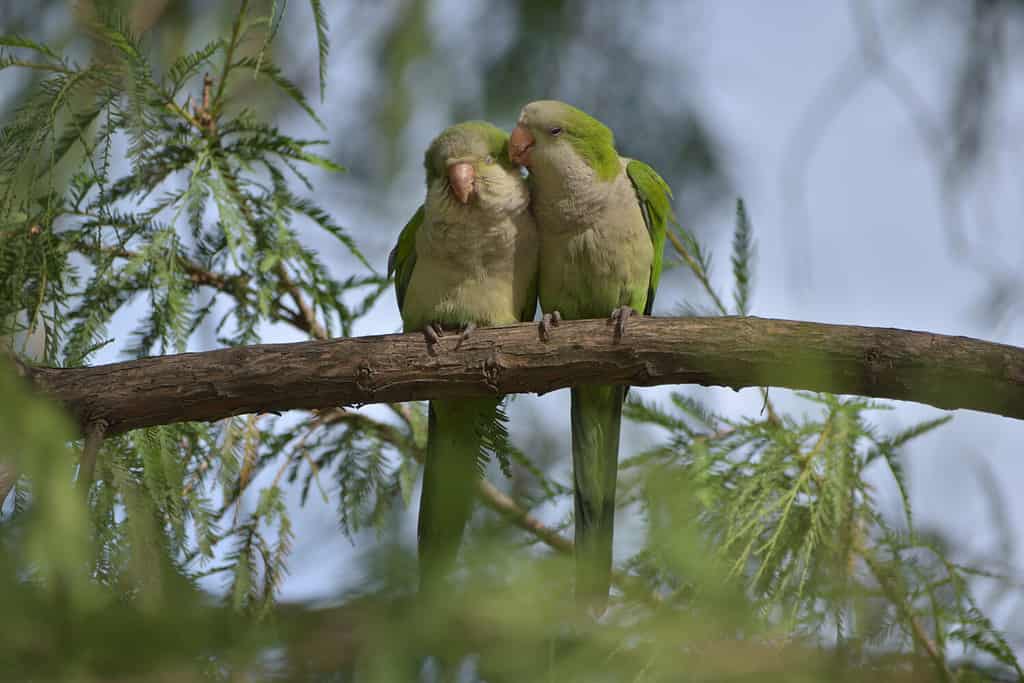
It is pretty easy to tell when two parakeets like each other.
©Christian Peters/Shutterstock.com
When parakeets are ready to mate, they will perch close to each other, with the female regurgitating her food for the male and lifting her tail. They will also engage in a lot of cooing and nuzzling. The female will lay eggs, which she will then keep warm for 18 to 20 days before they hatch. This summary of mating and gestation gives a basic understanding of the process. It typically takes place during the springtime when parakeets are most active.
Is Your Parakeet a Girl or a Boy?
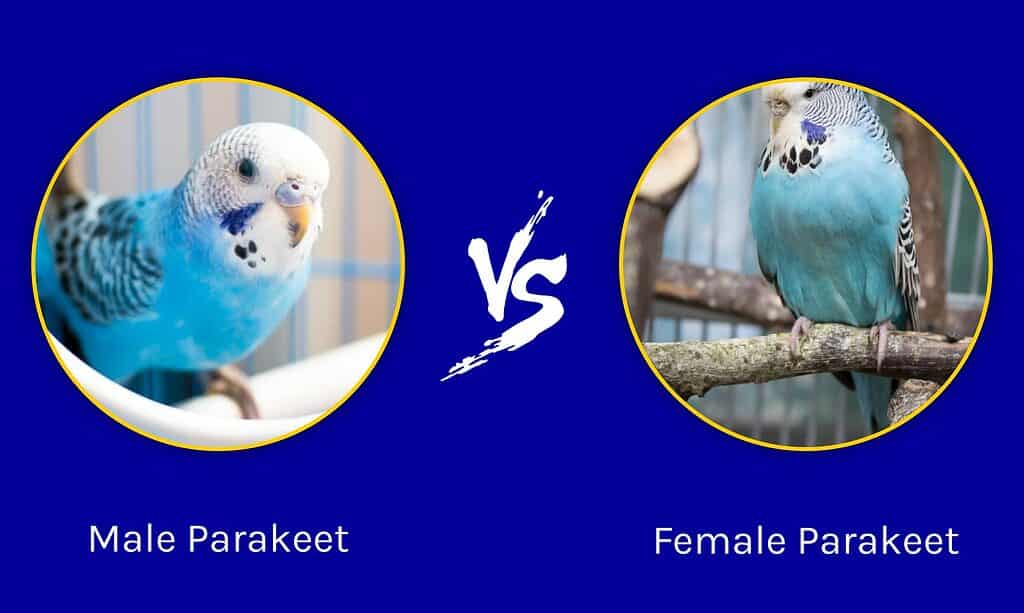
In order to tell the difference between male and female parakeets, it’s important to know that they are sexually dimorphic. Males will have a completely blue cere (this is the fleshy spot at the base of the beak) that is located just above their beak. Males also have completely blue nostrils. Females, on the other hand, will have a light blue cere and light rings around their nostril holes. As they mature, the female’s cere will turn tan-brown and have a rough texture. If two parakeets are kept together without any other birds present, they may appear to be breeding when they are actually just two of the same gender.
Bonding Two Parakeets

During parakeet mating and breeding, it may take a while for the couple to get to know each other.
©Uliya Krakos/Shutterstock.com
Forming a connection is an essential part of the breeding process for parakeets. If you want to breed parakeets of certain colors, it’s best to choose the male and female yourself. Afterward, place the birds in a spacious cage so they can become accustomed to living together. When the parakeets are comfortable with each other, you will be able to tell by their actions. Hints include them sitting close to one another or the male feeding the female. This is when you can be sure that they are properly bonded.
Parakeet Mating — Choosing the Right Time
Parakeets are usually mature enough to breed after they are one year old. You can tell if a female parakeet is mature by inspecting her cere. If her cere is brown and crunchy looking, then that is a sure sign that she is ready to start the breeding process. And you can set up the nesting boxes for your lovebirds.
Setting Up A Breeding Cage and Nesting Box
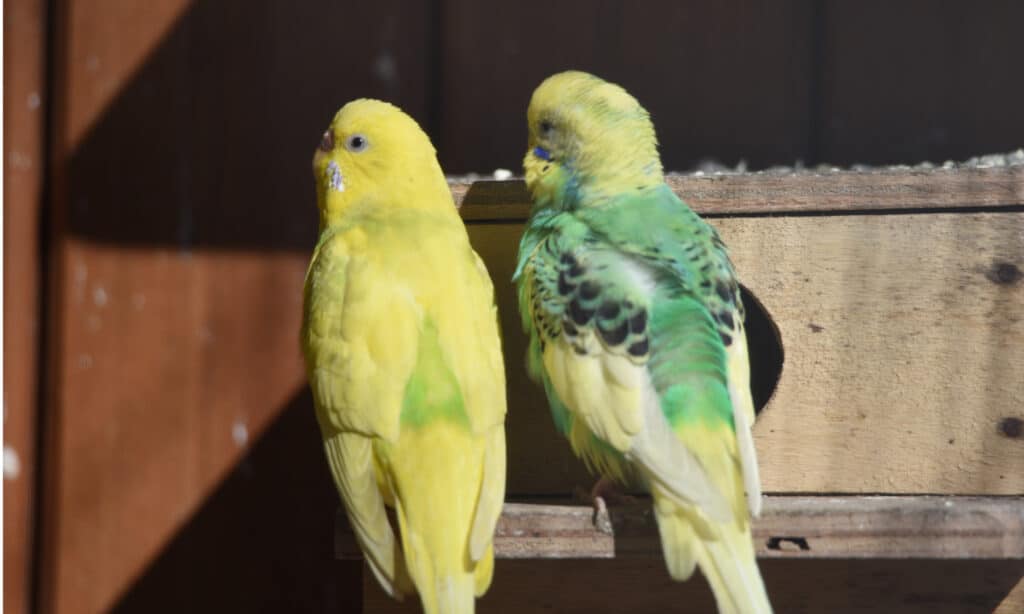
Nest boxes provide a secure shelter for wild and pet birds.
©iStock.com/ndefined undefined
For successful parakeet mating and reproduction, you should have a proper size breeding cage. Choose one that is 24” Long x 12” Wide x 16” High with a separate door to attach a nest box. Also, make sure that it has multiple perches, a mineral block, and a cuttlebone for calcium. And, of course, a dish for food and water.
When selecting a nest box for your parakeets, it is best to choose a rectangular design with an opening at one end and a circular indentation on the floor for the eggs. The box may also feature a lid on the top or side for easy access to the eggs and new babies, which should be monitored periodically.
When selecting nesting materials for your parakeets, you should make sure that it is safe for them to be around. Aspen shavings, newspaper shreds, and recycled paper are all safe options. However, cedar shavings are not recommended due to their toxicity. Additionally, do not be alarmed if your parakeet pair begins to push the nesting material out of the box; they tend to prefer a bare cage interior.
Parakeets require a balance of 12 hours of daylight and 12 hours of darkness for optimal health. During the breeding season, it can be beneficial to extend the amount of daylight they are exposed to by a few hours. This extra light helps the mother parakeet make vitamin D, which in turn helps to create strong bones and healthy eggshells.
Breeding Diet for Healthy Chicks
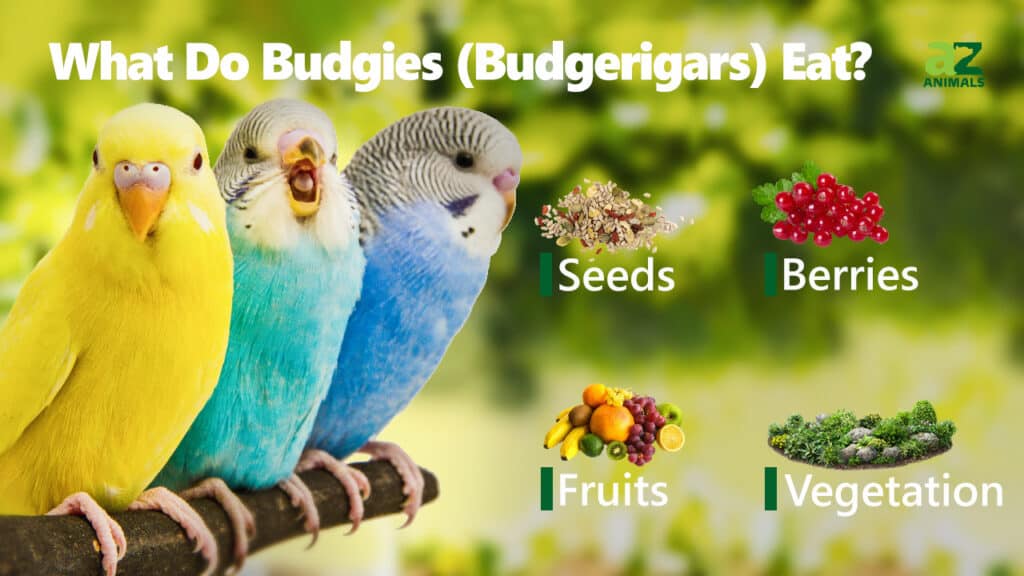
When engaging in parakeet mating, it’s important to provide your parakeets with a variety of plentiful and nutritious food. This will make them more likely to nest, and their chicks will be healthier. Soft food should be served to the pair to help them get into breeding conditions and to ensure that their chicks will continue to eat it after they hatch.
Ensuring that your Parakeets stay healthy and happy requires giving them a nutritious diet. It should include fresh, organic leafy greens, vegetables, and fruits. Good choices include broccoli, peas, carrots, corn, Swiss chard, kale, bananas, apples, cooked sweet potatoes, and bell peppers. You can also give them chopped eggs as a source of protein. Additionally, you can offer high-quality seed mix and pellet mix that have omega-3 fatty acids. Make sure to replace any food that has been sitting out for more than two or three hours with a fresher option. Lastly, always provide an abundance of clean water and change the water dish at least 3-4 times a day (or whenever it gets dirty).
Parakeet Mating — Fertilization and Eggs
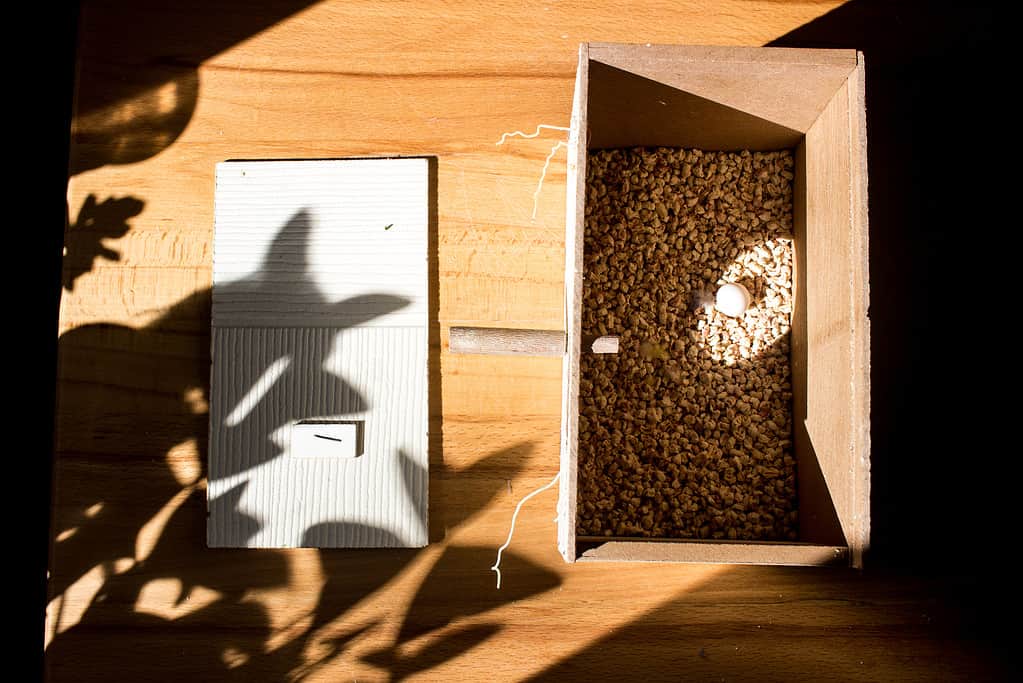
The price of parakeet mating and breeding is the tiny white eggs.
©Aybars Karakas/iStock via Getty Images
Once the pair of parakeets chosen for breeding are fully settled into their environment, mating will likely commence soon. It is recommended to cease any training that has been done with them during this time.
To ensure they remain healthy, change out their waste trays and food and water dishes often. When the female is ready to breed, she will bend forward and lift up her tail a tiny bit. The male will then move over her and rub his vent against hers to fertilize the eggs. Breeding can happen multiple times in a day, resulting in the female laying an egg every other day.
To indicate that she is ready to lay an egg, the female parakeet will start to shred paper and create a nest at the base of the cage. She will also display signs of strain and sit on the bottom of the cage. Generally, a single parakeet clutch contains between four and five eggs.
Once the female parakeet has laid her eggs, she will start incubating them. She typically won’t begin incubating until she has two or three eggs in the nest. Each egg will take roughly 18 days to hatch, with the first egg hatching every other day if the female begins sitting on her eggs immediately.
Parakeet Parenthood

This wee budgie (parakeet) is only four days old.
©iweta0077/iStock via Getty Images
The best part of parakeet mating is hatchlings! Once the baby parakeets have been born, it is up to you to decide how to care for them. You can either let the parents take care of the chicks, or you can hand-feed them yourself. Generally, breeders will let the mother and father raise their young until they are old enough to be weaned, which is usually around two weeks. The male parakeet typically feeds the female while she is in the nest, and she then distributes the food to her chicks.
Hand Feeding Parakeets
If you need to hand-feed your parakeet chicks, they must be removed from the nest box when they are 21 days old and kept in a commercial incubator until they have full feathers. The chicks should be fed formula every 3-4 hours using a syringe, and the food should be at 105 degrees Fahrenheit to ensure it is not too hot for them to digest. Instructions on how often to feed the chicks can usually be found on the formula packaging.
Hand-feeding parakeets is a process that can be simplified by making sure the bird is facing you. Carefully insert the tip of the syringe into the right side of the chick’s beak and angle the formula toward the back left of its mouth. As you squeeze the syringe, watch for the bird to bob its head as it swallows. Do not give too much formula at once, as it can cause choking. Afterward, clean any formula off of the chick’s face with a damp, warm paper towel and discard any remaining formula in the syringe. Clean the syringe when you are finished.
How to Get Parakeets to Stop Breeding
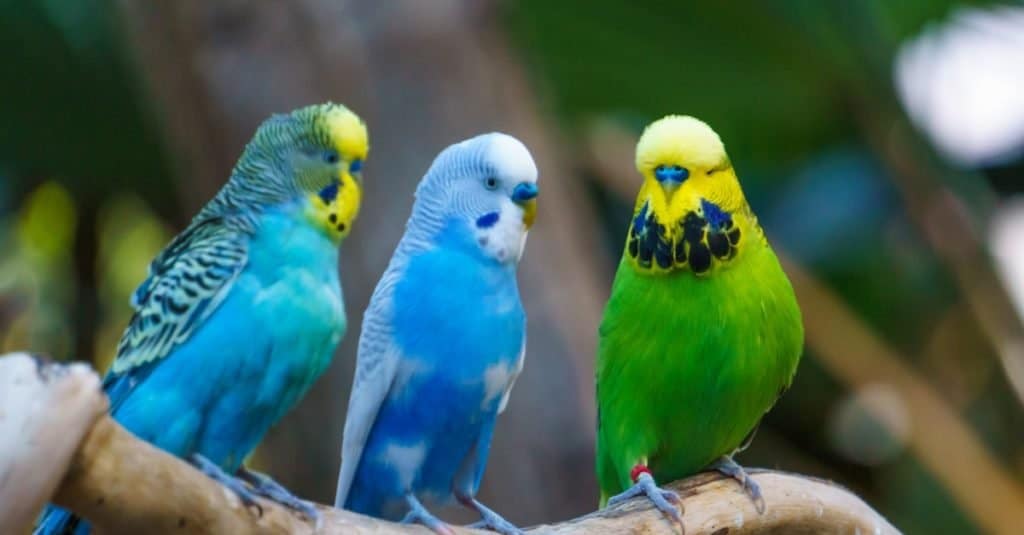
When parakeet mating is over, you can separate the couple.
©Dorota Photography/Shutterstock.com
If you want to prevent your parakeets from breeding, there are a few effective methods to consider. One of the most reliable approaches is to keep them in separate cages. This not only ensures that they remain isolated from potential mates but also minimizes any chances of accidental or unwanted mating.
In addition, another useful technique involves manipulating their exposure to daylight hours. Limiting the amount of natural light they receive can play a significant role in curbing their reproductive instincts. By covering their cage at 6 p.m., you create an artificial dusk-like environment that signals the start of nighttime for them. This helps regulate their internal biological clock and disrupts their natural breeding cycle.
Furthermore, removing their nesting box is crucial when trying to discourage breeding behavior among parakeets. A nesting box serves as an inviting space for these birds to lay eggs and raise chicks, promoting further reproduction. By eliminating this nest-like structure from their cage, you effectively remove one of the key triggers that encourage breeding activity.
Thank you for reading! Have some feedback for us? Contact the AZ Animals editorial team.

